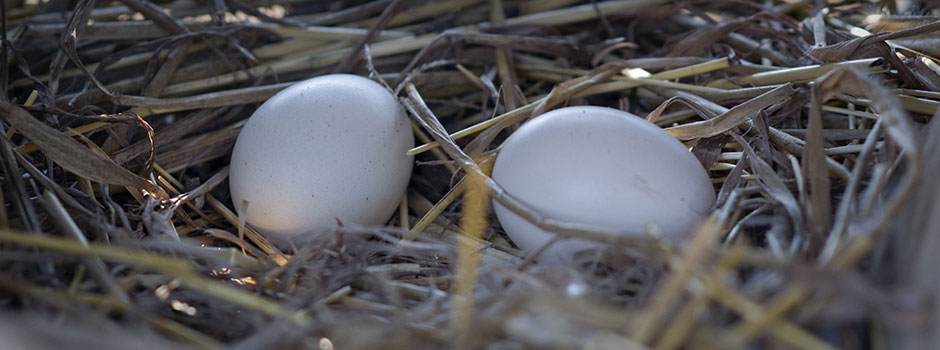The Livestock Sector from Different Angles
Identifying Efficiency Gaps Interview Ernesto Reyes
Measuring the size of efficiency gaps in the livestock sector of developing countries finds Ernesto Reyes a difficult task. Within the pilot project his organization have selected, detected gaps were found more in relation to animal and land productions. He wants to draw more attention to natural resource use efficiency.
Interview Transcript
Ernesto Reyes: I am a livestock economist working for the networks AGRIBENCHMARK and IFCN. I represent those networks within the Global Agenda, where I am leading one of the Action Networks, the “Closing the Efficiency Gap” Action Network.
Pascal Corbé, communications consultant, Global Agenda: (1:43) You launched a pilot on the Efficiency Matrix tool, can you tell us about the progress of that tool?
ER: I think we have been able to launch the Efficiency Matrix, which is the system for providing guidelines and metrics for measuring efficiency gaps. What we have been doing is selecting some pilots to which we can apply these efficiency models. Currently, we are adopting the Efficiency Matrix. We have agreed within the Action Network, on a set of indicators and guidelines and metrics to work with. Now we have adopted this Efficiency Matrix, because there are components we want to measure, and there are things you are able to measure. There is a huge gap here. We have used pilots to apply the Efficiency Matrix; we now know what we will need to adopt to use the the Matrix. We are preparing a modified version of this product
PC: Did you get any insight into how large the efficiency gaps actually are? Tell us if you have found an important gap somewhere and elaborate on that importance.
ER: The question about how large the efficiency gaps are is a difficult question because there are different gaps depending on the regions, depending on the production systems, and depending even on the issues we are measuring. I will say yes, within the pilots we have selected, the efficiency gaps we have detected are more in relation to animal and land productions. These are the main ones we have seen. It depends upon which region you are going to and which production system you are measuring. It is tricky to define these efficiency gaps. I would like to call more attention to natural resource use efficiency; which is a different approach. Most of the gaps have to be based on the original potential to produce something which is different. You cannot set up a gap according to a predefined system. You need to set up a gap according to the production and system and according to the region with which you are working.
PC: Is there a particular area with large gaps that you think is worthwhile looking at more specifically and more closely?
ER: What we are doing now is measuring the baseline scenarios - which is the current situation you find when you go somewhere. Then, what we are doing is using this Efficiency Matrix Framework to measure the alternative use of the alternative options for making livestock production more sustainable. In that sense, the particular gaps that we are still looking for are in terms of land productivity and animal production. Of course, there are a lot more natural resource gaps. But, again, we have seen huge potential in efficiency gaps and animal production. We are linking this to land productivity.
PC: You had a project in Mexico already. Can you tell us what is the key result of that, and whether you are thinking of scaling it up?
ER: Yes, from the previous experiences we had, we were working in silvopastoral areas and we have selected silvopastoral pilots to measure the Efficiency Matrix and the Efficiency Gaps. Within this, we have been collecting incredible answers in terms of efficiency, and incredible results with the silvopastoral system. We were thinking to ourselves, “how can we scale up this project?” These silvopastoral systems are so good and can benefit a lot of production systems, how can we scale up this system?
Why it has not already been covered, or why has it not been the case to enlarge these silvopastoral systems? Mexico is a case for this, and it has already been a region that has already scaled-up the silvopastoral systems by themselves. It is a place where you can find more than 12,000 hectares, with a group of producers, applying the silvopastoral systems to improve the efficiency gap. These are the major, they have been able to scale up.
PC: What do you expect of the Global Agenda’s Multi-Stakeholder Partnership meeting now, especially if you think of the theme, which is around the social benefits of livestock keeping?
ER: We have been able, somehow, to frame what is the value of livestock on environmental conditions and what are the environmental implications? We have been able to measure in terms of nutritional goods that livestock can provide. We are entering into a new dimension, which is the social dimension of livestock, and I suspect this will be a huge step [forward] for the Global Agenda and for the livestock sector. Because we can see the livestock sector from different angles. Most of the misunderstandings [about livestock] you can easily see nowadays is because livestock has been seen from just one angle. And if you analyse the livestock sector from one angle only, you will probably get the wrong conclusion. Whereas if you have, as we have in the GASL, different perspectives and different angles, trying to cope with most of the sustainability phases, you will get the complete vision of things. And the social dimension is especially the one we are looking for.
PC: Thank you
ER: Pascal, thank you, to you. It has been a good opportunity to express what we are doing in this Action Network, and will help to make progress in Ethiopia with the MSP.







